Can Hamsters Eat Peppers?
Peppers are a popular human snack and a staple in many recipes. But we need to know a nutritious and secure way to give it to hamsters. So, the question arises: can hamsters eat peppers?
The answer is yes, with some important caveats.
Hamsters might often easily take peppers. For hamsters, bell peppers especially are an excellent source of nutrition. These are usually called sweet peppers, a nutritious delicacy hamsters may occasionally enjoy. High in carotenoids, lycopene, fiber, and vitamins A, C, E, and K, they supply a wide range of dietary benefits.
However, it’s not suggested to feed hamsters chili peppers, mainly since they include high levels of capsaicin. Ensure that you make the right choice about introducing peppers to your hamster’s meals, let’s get into the nutritional facts, benefits, dangers, and guidelines in this extensive piece.
The Nutritional Lowdown
An omnivorous diet, such as vital nutrients, fiber, and protein, is essential for hamsters. Feed peppers in proportion; bell and mild chili, which are different types, can be beneficial additions to their diet.
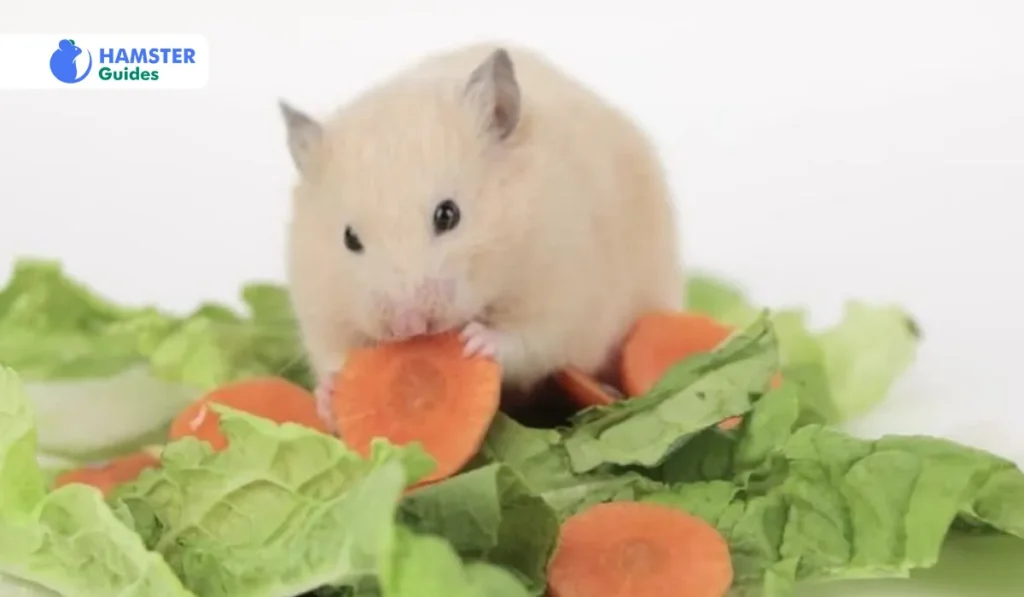
Chili peppers are good for wellness and are high in dietary fiber, carotenoids, lycopene, and vitamin C, which boosts immunity. Peppers are an easy pet treat due to their bright colors and crunchy flavor.
More Information: Do not introduce your hamster to a new food, such as pepper, until 12 weeks old.
Which Pepper Is Not Good For A Hamster?
Refraining from feeding extremely spicy peppers to hamsters is crucial as they could be problematic to absorb and cause side effects like digestive problems, diarrhea, or distress. In addition, the spicy flavor may prevent hamsters from taking their typical food, which might result in imbalances in nutrition.
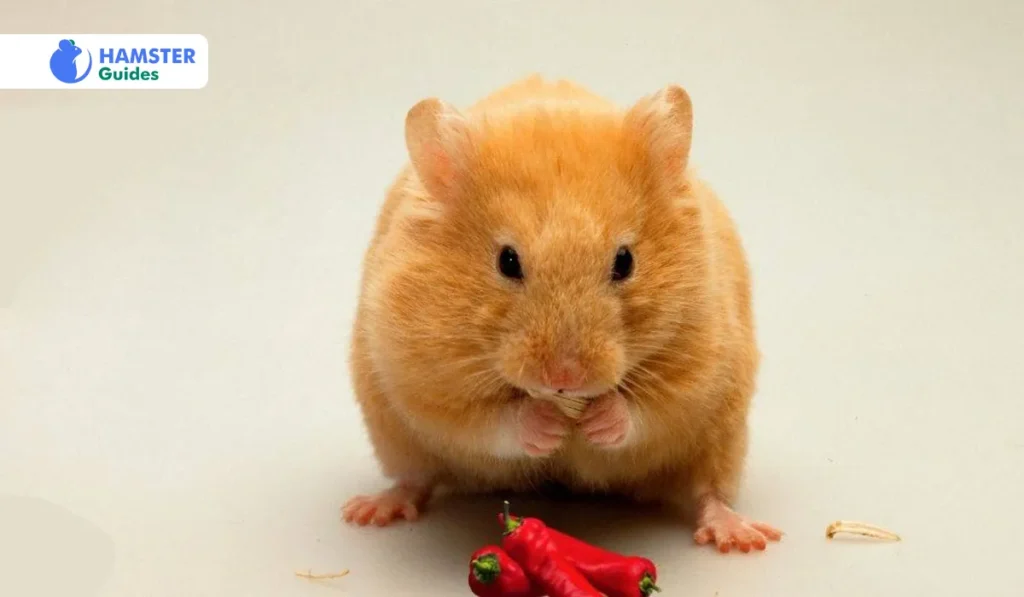
Peppers’ spicy taste is produced by an element termed capsaicin. Excessive capsaicin levels might irritate and suffer hamsters, even though some may be capable of consuming mild chili peppers within limits.
It is advised to limit the type of peppers you feed your hamster, which includes green, red, or yellow bell peppers, and to give them in proportion. Always watch your hamster’s behavior, and take counsel from a veterinarian if you have any issues about various pepper kinds or notice unusual reactions in your pet.
Related Resource: Can Hamsters Eat Kiwi?
Peppers: A Nutritious Addition to the Hamster Diet
Bell peppers are available in three primary colors: green, red, and yellow. Although they are filled with vital nutrients and vitamins, which include lycopene, fiber, carotenoids, and vitamins A, C, E, and K. They are a good source of nourishment for hamsters. Antioxidant compounds high in peppers may improve your hamster’s immunity and develop overall wellness.

Although chili peppers are hot and may harm stomachs, some people get nervous about serving them to hamsters. For hamsters, spicy chili peppers are a complete no-no. Their spicy element, capsaicin, could irritate your hamster’s mouth and stomach. If you provide peppers to your hamster, remaining with a moderate variety is suggested.
Nutritional Content of Different Peppers (per 100g)
| Pepper Type | Vit C (mg) | Vit A (IU) | Vit E (mg) | Vit K (µg) | Fiber (g) | Potassium (mg) | Folate (µg) | Carotenoids | Capsaicin Level |
| Chili Pepper (Red) | 144.9 | 4164 | 1.03 | 14.6 | 9.0 | 322 | 23 | High | High |
| Bell Pepper (Red) | 127.7 | 3131 | 0.37 | 4.9 | 2.1 | 211 | 10 | High | None |
| Bell Pepper (Yellow) | 183.5 | 1350 | 0.12 | 5.4 | 1.8 | 148 | 11 | Moderate | None |
| Bell Pepper (Green) | 80.4 | 590 | 0.37 | 7.4 | 1.7 | 175 | 10 | Moderate | None |
| Jalapeno Pepper | 118.6 | 570 | 0.69 | 7.5 | 2.8 | 314 | 23 | Moderate | Moderate |
Important Note: The pepper’s quantity of capsaicin defines how spicy it is. A strong capsaicin dose is not suggested for hamsters as it could harm them.
Benefits of Peppers for Hamsters

Related Resource : Can Hamsters Have Pickles?
Risks of Peppers for Hamsters
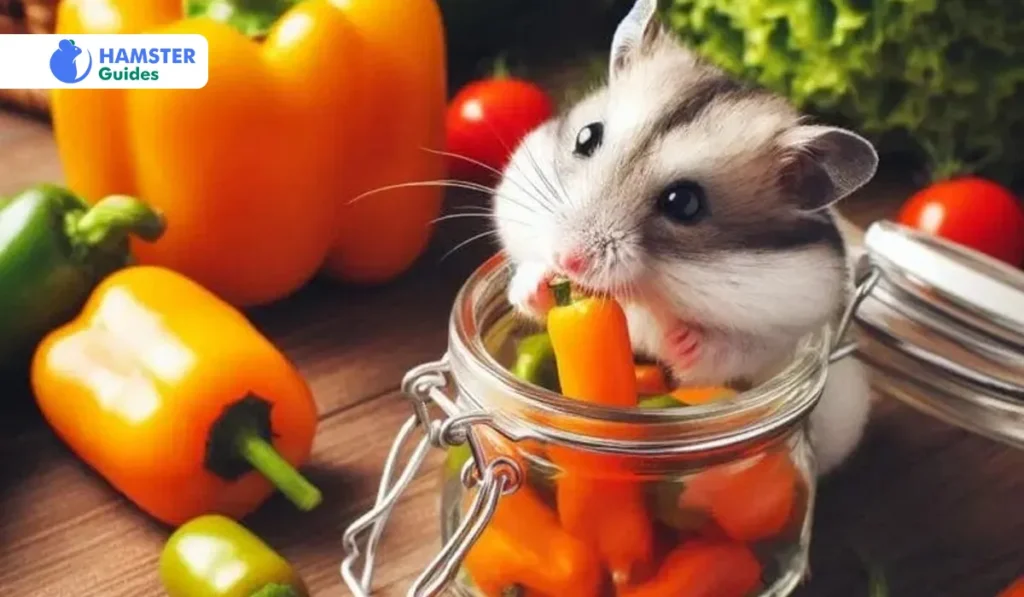
Although there are several advantages to taking peppers, excessive consumption may result in adverse effects such as bloating, gas, diarrhea, digestive problems, and dehydration. Bell peppers can make them feel bloated, particularly when they’ve just started eating them.
Small sizes of peppers ought to be fed occasionally. New products may be given carefully, and fresh water should always be available to prevent these dangers.
Related Resource: Can Hamsters Eat Melon?
Symptoms of Pepper Poisoning in Hamsters

When your hamster takes a lot of peppers, keep looking out for signs, including diarrhea with chunks of raw pepper, hunger, pain in the stomach, or energy loss. Should these symptoms not disappear, stop giving peppers and consult an exotic veterinarian for suitable treatment care.
Additional Important: Peppers are a treat, not an essential meal. Your hamster’s diet must be built chiefly on high-quality commercial hamster food.
Serving Up the Right Way
Moderation is Key: Although black pepper is nutritious, it should be eaten in moderation. It’s acceptable to consume a tiny bit—no bigger than a raisin—two or three times a week.
Fresh is Best: Keep out dried peppers because of their complex texture, which may pose choking hazards. It is better to use freshly peeled and well-washed bell peppers.

Raw or Cooked? Peppers are healthy for hamsters to consume, both cooked and raw. The dietary benefit of peppers is most significant if they are raw; steaming lowers the texture.
Skip the Spices: Give peppers without salt, spices, or oils; they can harm your hamster’s delicate digestion.
How Much Pepper Can Hamsters Eat?
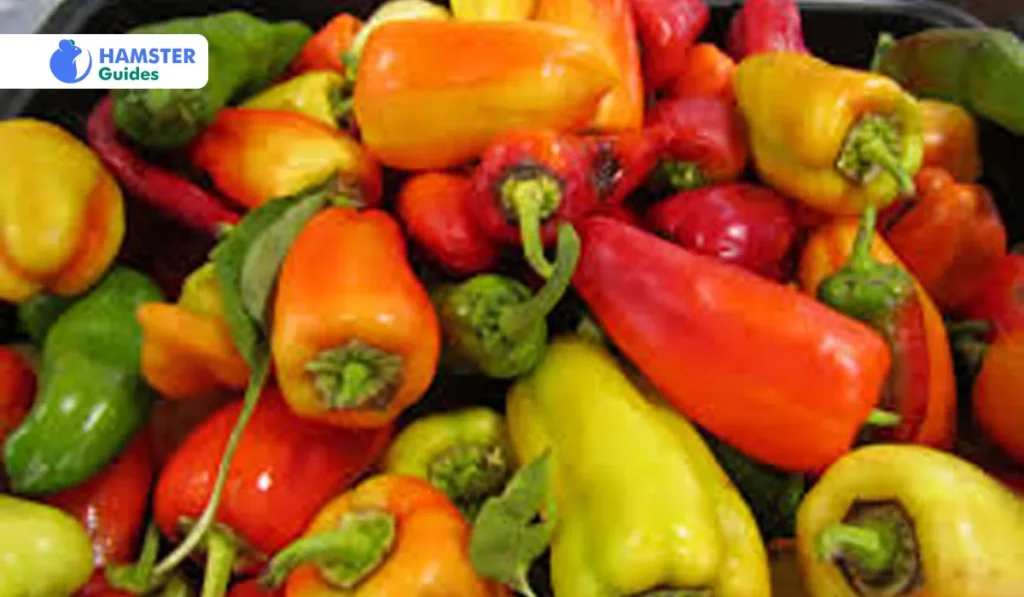
Twice a week, offer your hamsters 1-2 small portions of bell pepper or a small piece of mild chili pepper. Within a single day, discard away any abandoned peppers. Add excellent quality commercial hamster food, timothy hay, veggies, fruits, rare proteins, and other treats to assist them in making a nutritious diet for your hamster.
Related Resource: Can Hamsters Eat Raw Potatoes?
Recommended Serving Sizes for Different Hamsters
| Hamster Type | Bell Pepper (Red) | Bell Pepper (Green) | Bell Pepper (Yellow) | Jalapeno Pepper | Chili Pepper (Red) |
| Dwarf Hamsters | 1/2 teaspoon | 1/2 teaspoon | 1/2 teaspoon | Not Recommended | Not Recommended |
| Syrian Hamsters | 1 teaspoon | 1 teaspoon | 1 teaspoon | 1/2 teaspoon | 1/2 teaspoon |
Important Note: These ratios are only for guidelines. To obtain particular guidance, consult a veterinarian and always monitor your hamster’s behavior.
Alternatives and Supplements to Peppers:
To add variety, offer various vegetables and fruits, including apples, cucumbers, squash, broccoli, carrots, and blueberries. Popular hamster food manufacturers like Brown’s Tropical Carnival, Kaytee Forti Diet, Oxbow Essentials, Supreme Tiny Friends Farm, and Vitakraft Menu might provide a nutritious diet.
The Final Words
To sum up, hamsters may benefit from the nutritional value of peppers. They must have them in the right amount. Peppers enhance their general health if it is carefully involved in the diet. Remember that balance is essential and that it meets your hamster’s particular needs. Always ask for the help of a veterinarian. Your hamster can prosper on an array and balanced diet and even enjoy pepper treats if appropriately fed.
For a healthy and active pet, focus on diversified food intake.

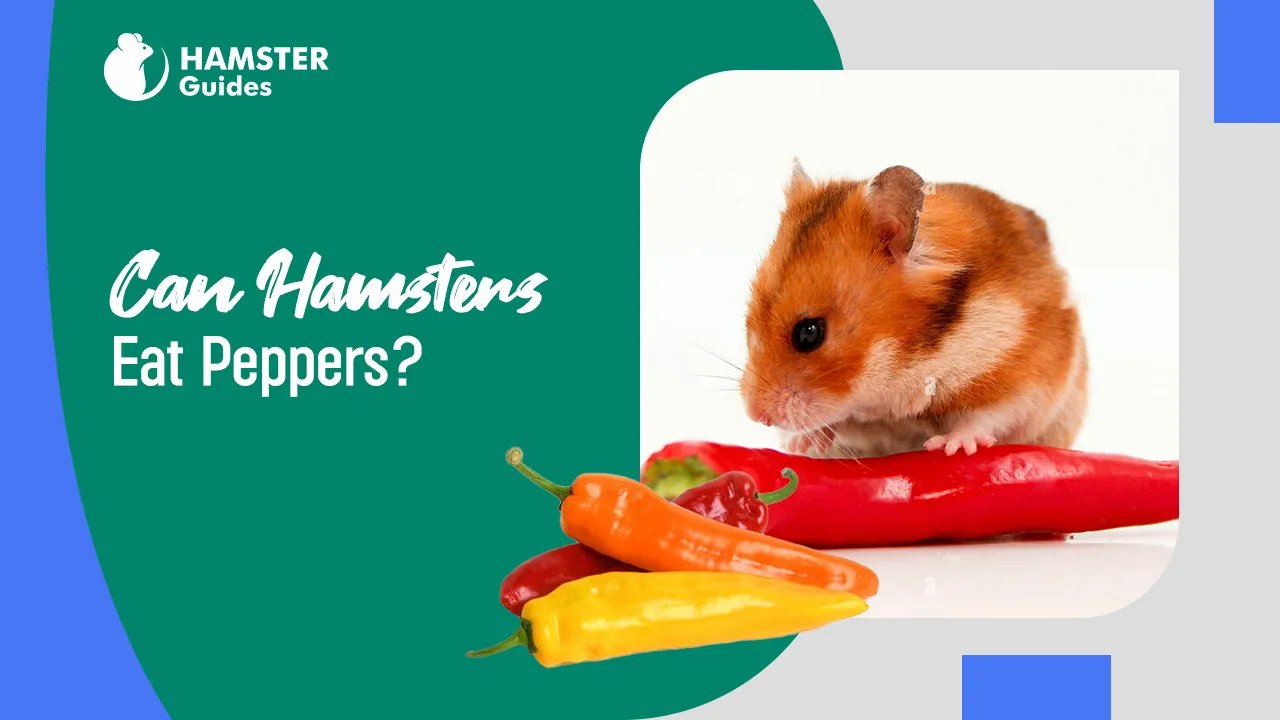







Leave a Reply